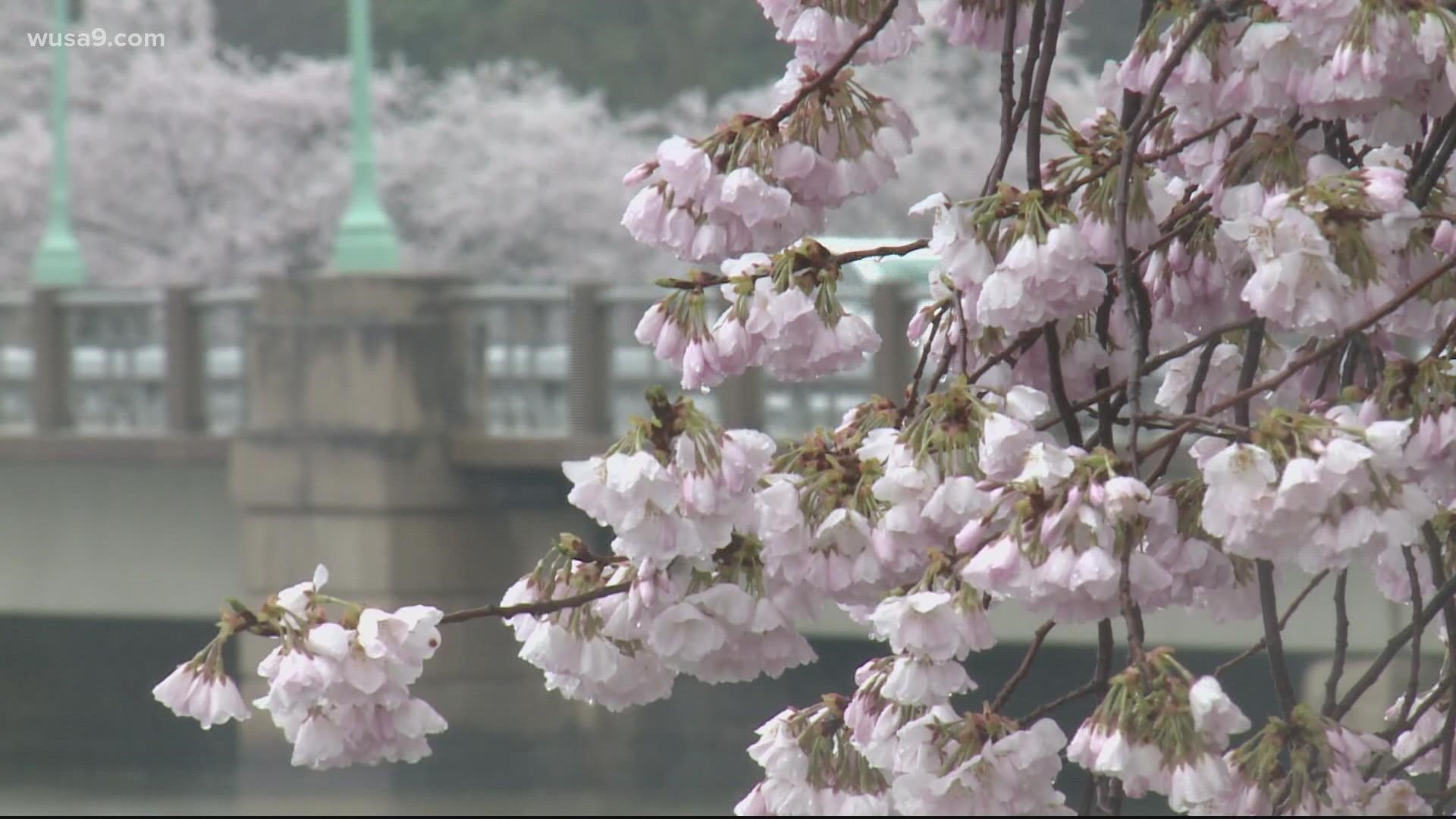WASHINGTON — Every year Washingtonians and D.C. lovers eagerly await the day the National Park Service announces its cherry blossom peak bloom prediction. This year, they’re anticipating March 22-25 will boast peak bloom, when 70% of the trees surrounding the Tidal Basin have bloomed.
Estimating peak bloom is a difficult process, keeping experts on their toes all the way up to announcement day. In 2021, peak bloom came about a week earlier than anticipated. The NPS uses a combination of temperature analyses, historical records and psychic trees to make their estimate every year.
Well, they’re not technically psychic, but they act that way.
THE QUESTION
How does the National Park Service estimate the cherry blossom tree peak bloom every year?
THE SOURCES
- Mike Litterist, spokesperson for the National Mall and National Park Service
- A 2011 research paper modeling mathematical equations for calculating peak bloom
- WUSA9 Chief Meteorologist Topper Shutt
WHAT WE FOUND
National Park Service spokesperson Mike Litterest walked us around the Tidal Basin previewing the very beginnings of blooms for the Yoshino cherry blossom trees. A couple branches here and there are sporting green buds, the first stage of the blooming period. On March 7, NPS reported the visibility of some florets.
NPS has a team of experts dedicated to estimating peak bloom as accurately as possible, but they say it is almost impossible to do so more than 10 days out. That’s because peak bloom is almost entirely dependent on temperature patterns. Historical data can help, but temperature fluctuations in late winter can make it more complicated. For this, they employ what are called “heating days.”
“After the trees go dormant, we start counting what are called heating degree days," Litterest said. "The higher the temperature on any given day, the more heating degree days you get.”
Litterist explained it’s like a points system with a specific end result.
“You're working your way towards a total number," he sad.
That golden number is 221.2 heating days. NPS plugs every day’s temperature into a complex mathematical formula to calculate how many points are earned each day. The complex heating day formulas come from a 2011 research paper published by researchers from the University of Washington, Kyung Lee University and Seoul National University.
Because of this relatively specific heating days formula, abnormally warm days in late February and March can accelerate peak bloom–while lower temperatures effectively pause blossom development.
WUSA9’s Chief Meteorologist Topper Shutt explained that differing temperatures between night and day can impact bloom. If temperatures at the Tidal Basin stay warm through the night, the blooming process continues. If temperatures dip low enough at night, the blooms pause until it warms up in the daytime.
Now, back to those psychic trees.
There is one tree at the Tidal Basin that, every year, without fail, blooms 7-10 days ahead of the rest of the Yoshino trees. According to Litterist, they don’t quite know why. Despite this, that indicator tree is a helpful resource for predictions every year.
The Cherry Blossom Festival is on this year for the first time since 2019. Find out everything you need to know about the celebration HERE.
RELATED: VERIFY: Can dogs sniff out COVID-19?

